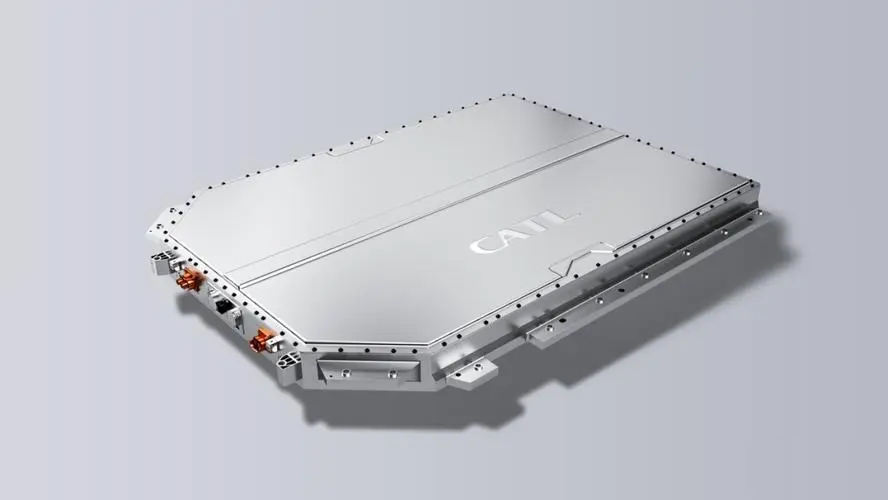
Recently, Toyota announced a significant breakthrough in solid-state battery technology. This new battery can be fully charged in just 10 minutes, offers a range of up to 1200km, weighs half as much as its predecessors, and costs 50% less. This revelation has been the talk of major media outlets. If the claims hold, this could represent a massive advancement for electric vehicles (EVs).
Often hailed as the next "ultimate answer" in battery technology, solid-state batteries, specifically solid-state lithium batteries, are essentially an advanced form of lithium batteries. Imagine Popeye after eating spinach - that's how much stronger these batteries are compared to their traditional counterparts.
The main difference between solid-state lithium batteries and lithium-ion batteries lies in the electrolyte used. Solid-state batteries utilize solid oxides or sulfides as the conductive material, replacing the liquid electrolyte and separator found in traditional lithium-ion batteries. Solid electrolytes are denser than their liquid or gel counterparts, allowing solid-state batteries to produce more energy for the same weight or volume. They have the potential to achieve energy densities of 500Wh/kg or even 600Wh/kg.
For context, the current energy density of ternary lithium batteries is around 220Wh/kg. This means the solid-state variant can offer more than double the energy, resulting in lighter and more compact batteries. This is a game-changer for EVs, translating to longer ranges and reduced vehicle weight.
Fast Charging: Solid-state batteries can endure higher charging rates because of their solid electrolytes, potentially reaching a rate of 10C or more (i.e., full charge in about 10 minutes). Toyota's claim of a 10-minute full charge is a testament to this capability.
Performance in Extreme Temperatures: Liquid electrolytes can be adversely affected at high temperatures. In contrast, solid electrolytes perform even better. Given that rapid charging produces significant heat, this characteristic ensures robust performance during fast charging sessions.
Impressive Range: The solid-state battery's standout feature is its impressive range. Toyota's claim of a 1200km range, while seemingly exaggerated, is within the realm of possibilities for solid-state technology. Toyota had already introduced a solid-state battery with over 1000km of range back in 2010.
Safety: Solid-state batteries are inherently safer than lithium-ion batteries. The latter uses a combustible organic solvent as an electrolyte, which can pose safety risks at high temperatures. Solid-state batteries, on the other hand, do not contain any flammable components, allowing them to operate safely even at elevated temperatures. Furthermore, while liquid electrolytes can freeze and impair battery performance at low temperatures, solid electrolytes remain unaffected, ensuring consistent performance.
Ouyang Minggao, an academician of the Chinese Academy of Sciences and a professor at Tsinghua University, once mentioned, "There are countless innovators worldwide working on solid-state battery technology. With the emergence of ChatGPT technology, the efficiency of exploring new materials has been enhanced, reducing development cycles. With global efforts, solid-state batteries are poised for success."
The buzz around Toyota's announcement primarily revolves around the claim of "halving the cost." Historically, solid-state batteries have been expensive to produce, mainly due to the cost of raw materials and the strict purity requirements for production.
For instance, the cost of lithium sulfide, a potential material for solid-state batteries, is 5-10 times that of lithium carbonate. Manufacturing these batteries also requires significant capital investment in equipment.
Zeng Yuqun, the chairman of CATL, once remarked that there remain numerous fundamental scientific and technological challenges with solid-state batteries. Despite more than a decade of intense research, it's still challenging to produce a viable and competitive product. Currently, the cost of semi-solid batteries is already significantly higher than that of liquid batteries. Industry research suggests that the cost of semi-solid batteries using NCM811 cells is about 80% higher than their liquid counterparts.
According to SNE, a research institute from South Korea specializing in new energy and EVs, the cost of solid-state batteries is expected to be at least twice that of lithium-ion batteries.
Despite the challenges faced by the current generation of EV batteries, such as limited range, lengthy charging times, and reduced performance in cold climates, solid-state batteries promise to overcome these limitations. Their potential benefits affirm their status as a "delicious piece of cake" in the battery world.
Numerous battery manufacturers, carmakers, and research institutions are investing heavily in solid-state battery technology. However, due to the technical complexities and high costs associated with fully solid-state batteries, most companies are opting for a phased development approach, initially focusing on semi-solid batteries.
For a long time, solid-state batteries have been touted as the future, promising longer ranges, shorter charging times, and enhanced safety compared to most batteries used in today's EVs. However, as of now, no manufacturer has delivered a 100% solid-state solution.
The industry landscape showcases some impressive solid-state technologies, boasting incredible performance metrics, remarkable energy densities, heightened safety features, scalable manufacturing, and straightforward battery integration. Yet, no single company or product provides a comprehensive solution.
Currently, the journey from lab to commercial use for solid-state batteries is long and may span 5 to 10 years. Some even speculate that this path might lead to a dead-end. While there's a barrage of news on solid-state batteries, tangible products are yet to be seen.
In essence, solid-state batteries in the current technological landscape are like unicorns in folklore - often talked about, but never seen.
Next:Cycling 15,000+, CALB exhibits new high-capacity, long-life 314Ah battery cell
Previous:Revolutionizing Energy Storage: Higee's 314Ah High-Capacity Cells